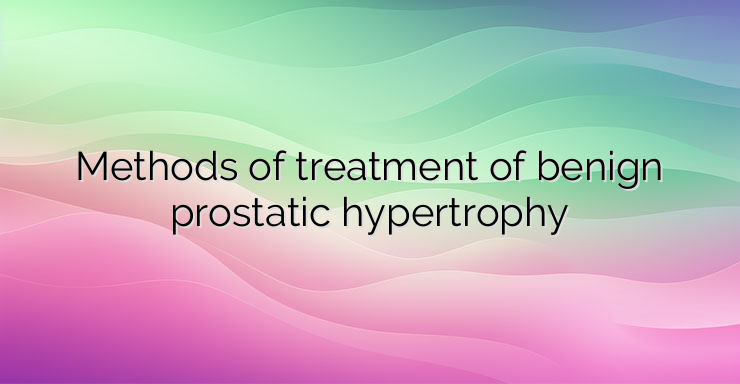There are many treatment options for benign prostatic hypertrophy. You and your doctor will decide together which treatment is right for you. Mild cases may not need treatment at all at first. In some cases, minimally invasive procedures are a good choice, and sometimes a combination of several types of treatment works best. Benign prostatic hypertrophy often requires only active surveillance. This means that if you have been diagnosed with benign prostatic hypertrophy, regular visits to a urologist will be necessary. He will monitor whether the disease is progressing and how well the symptoms are being controlled. Active surveillance is best used in men with mild to moderate symptoms. Drug therapy includes treatment with alpha-blockers. They relax the prostate and bladder muscles, improve urine flow and reduce the symptoms of benign prostatic hypertrophy. Alpha-blockers do not shrink the size of the prostate gland. Men with moderate to severe symptoms of benign prostatic hypertrophy are suitable for treatment with alpha-blockers. Side effects may include dizziness, fatigue, and ejaculation problems. One advantage of alpha-blockers is that they begin to work immediately after administration. Another group of medications that are used to treat benign prostatic hypertrophy are 5-alpha reductase inhibitors. They block the production of dehydrotestosterone, a male hormone that can build up in the prostate and cause hypertrophy. They shrink the prostate, increase urine flow and reduce the risk of complications. Side effects include prostate gland dysfunction and decreased libido. It is necessary not to interrupt the intake of medications from this group to prevent the return of symptoms. In combination therapy, an alpha-blocker and a 5-alpha reductase inhibitor are used together. Men with more advanced hypertrophy are good candidates for this type of treatment. Alpha-blockers and 5-alpha reductase inhibitors may work better together than either drug alone. They improve the symptoms and prevent the worsening of benign prostatic hypertrophy. Suitable for conducting minimally invasive treatment are men who have taken drug therapy without any particular result or those with the following symptoms: Weak stream of urine; Straining to start urinating; Obstruction of the urinary tract; Bladder stones; Hematuria; Incomplete emptying of the bladder; Bleeding from the prostate. The recovery period usually does not take long. Temporary side effects after the procedure may include hematuria, burning during urination, frequent urination, sudden urges to urinate, urinary tract infections, and less commonly, erectile dysfunction or retrograde ejaculation (ie, seminal fluid enters the bladder, instead of out through the penis). Types of mini-invasive procedures can be:Lifting of the prostatic part of the urethra – small implants are used in the prostate. These implants lift and compress the enlarged prostate so that it no longer blocks the urethra. This procedure takes less than an hour. Most patients see improvement in symptoms within about 2 weeks. Steam thermotherapy – this treatment uses steam to destroy prostate cells pressing on the urethra. The release of heat energy causes rapid cell death, after which the body’s natural healing response breaks down and removes the dead tissue. This leads to a decrease in the size of the prostate. Catheterization – in this case, a tube called a catheter is used to drain urine. Catheters can be inserted through the urethra or through a small puncture above the pubic bone into the bladder. The results are temporary and side effects can be urinary tract infections.


Leave a Reply